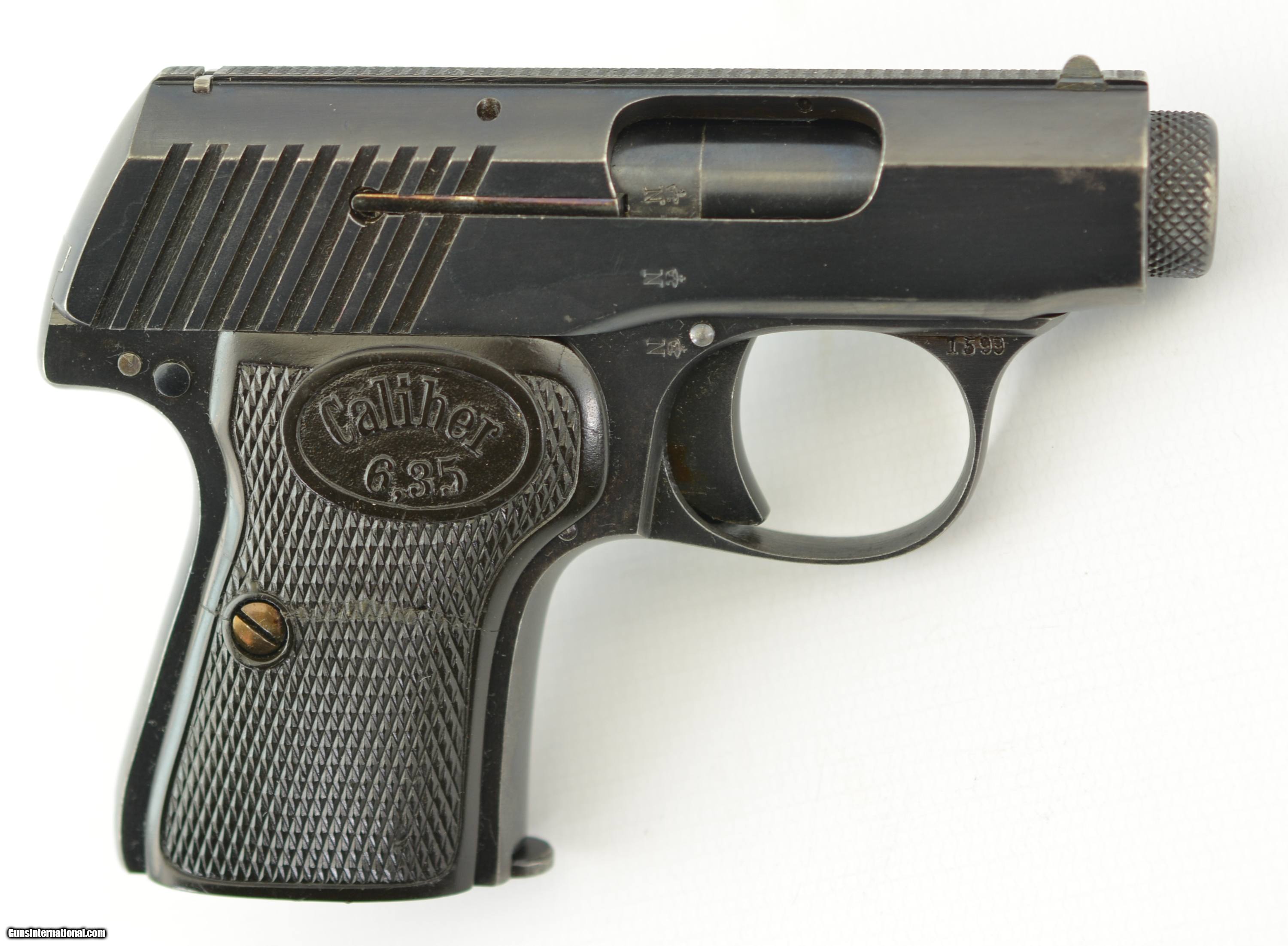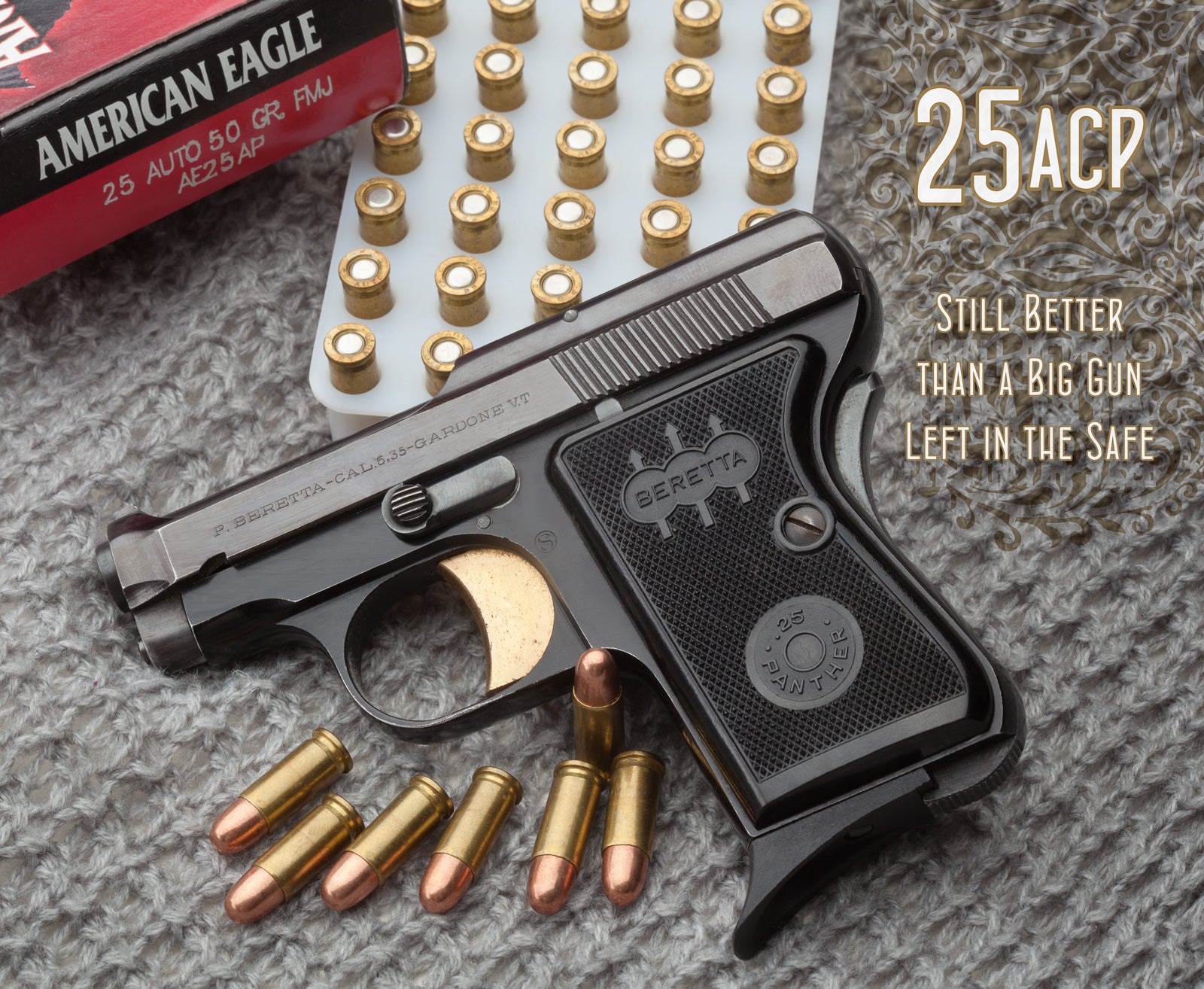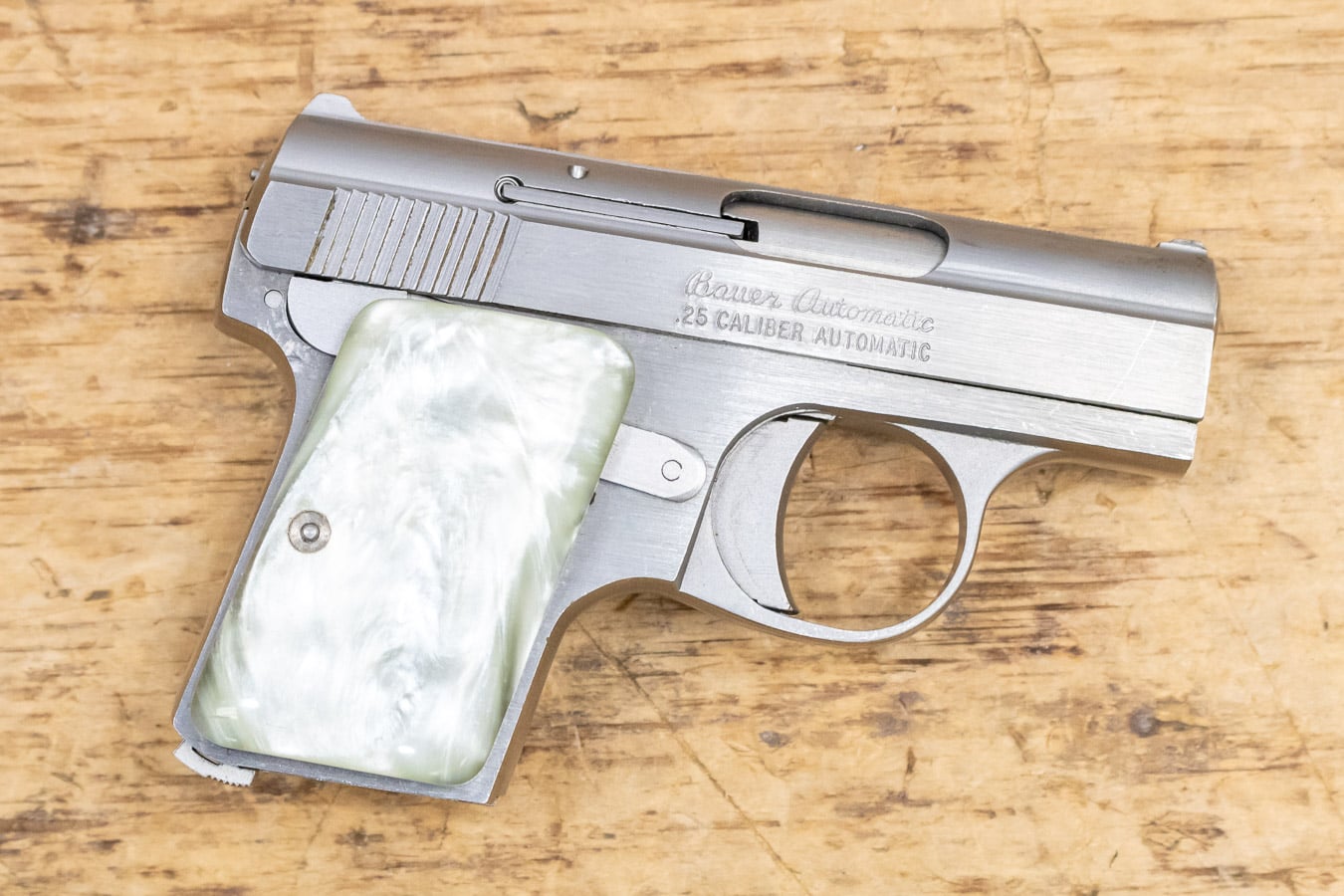Still clinging to the belief that bigger is always better when it comes to firearms? Prepare to have your perceptions challenged: the diminutive .25 ACP, often overlooked and underestimated, continues to hold a unique, if controversial, position in the world of self-defense.
Despite its detractors, the .25 ACP remains in production by major ammunition manufacturers like Federal and Fiocchi, a testament to its enduring, albeit niche, appeal. The cartridge's history is intertwined with the development of compact, easily concealable handguns, a design philosophy that continues to resonate with those prioritizing discretion and convenience. You can still find a variety of .25 ACP pistols from different brands and models, sometimes even at discounted prices, if you know where to look. Many online retailers allow you to browse new and used .25 ACP guns, often with options for wood, polymer, or stainless steel grips. Setting up notifications for when your desired model becomes available is a common practice for enthusiasts.
| Category | Details |
|---|---|
| Cartridge Type | Centerfire |
| Bullet Diameter | .251 inches (6.35mm) |
| Typical Bullet Weight | 50 grain |
| Typical Muzzle Velocity | 760 fps (from a 2" barrel) |
| Typical Muzzle Energy | 64 ft-lbs |
| Common Manufacturers | Federal, Fiocchi, Winchester, Aguila, Hornady, Magtech |
| Popular Handgun Models | Beretta 21A Bobcat, Taurus PT25, Phoenix Arms HP25A |
| Primary Use | Concealed Carry, Self-Defense |
| Historical Significance | Designed by John Browning in 1905 for reliable performance in small, semi-automatic pistols |
| Learn More at Wikipedia |
For those looking to stock up, ".25 ACP ammo" is readily available. You can shop selections from Fiocchi, Winchester, Aguila, Hornady, and more. The cartridge, ideal for concealed carry, offers .25 ACP firearms that are compact and easy to shoot, making them an option for individuals prioritizing these characteristics. Guns.com and Budsgunshop.com are great databases to search and shop for guns, ammo, mags, optics, and more. Filter products to compare by specs and price and find both new and certified used handguns, and related accessories.
- Christian Horner Scandal Allegations Geri Red Bull Fallout
- Dhurata Ahmetaj Xherdan Shaqiri Are They Still Together In Year
Consider, for example, the Magtech 25A, a popular choice for sport shooting range and training. This full metal jacket round features a 50-grain bullet and boasts a muzzle velocity of 760 fps. While some may scoff at these numbers, understanding the cartridge's intended purpose is crucial. The .25 ACP was never designed to be a powerhouse; it was conceived as a compact, reliable option for self-defense in situations where concealment was paramount.
One common point of comparison is the .22 LR. The .25 ACP has a slightly larger bullet diameter than the .22 LR. Specifically, the .25 ACP typically has a bullet diameter of .251 inches (6.35mm), while the .22 LR has a bullet diameter of .222 inches (5.6mm). Furthermore, the .25 ACP is a centerfire cartridge, meaning that the primer is located in the center of the cartridge case base, generally contributing to better reliability compared to the rimfire .22 LR, especially in semi-automatic pistols.
The history of the .25 ACP is also marked by legislative considerations. A good .25 ACP pistol was, historically, easy to hide, easy to fire, and very affordable, which eventually made the type targeted by the 1968 Gun Control Act. This act banned the import of many pistols and shifted the landscape for small, inexpensive handguns.
- Andrew Coyne Life Career Controversies Explored
- Doremi Haywards Husband Sean Vaardals Life Career Marriage
Alongside the .25 ACP, other compact cartridges like the .32 ACP, .380 ACP, and even the 9mm Luger are often considered. However, each cartridge offers a different balance of size, power, and concealability. The Phoenix Arms HP25A, for instance, is a .25 ACP pistol that holds 10 rounds, offering a higher capacity than some of its contemporaries.
The typical .25 ACP cartridge sports a 50-grain projectile, the most common weight for its caliber when it was introduced around the turn of the century. The bullets full metal jacket is concentric enough to give it straight flight, and also hard enough to prevent excessive residue buildup in the pistol's bore, maintaining accuracy over time. The ammunition details and history of the .25 ACP reveal that it is more noted for its handiness in a deep concealment setting than for its stopping power. Ballistically, it's comparable to the .22 Long Rifle. However, the .25 ACP's centerfire design makes it generally more reliable in semiautomatic handguns.
It's crucial to acknowledge that among all of the common self-defense handguns, the .25 ACP autoloader is arguably the least effective and, for most purposes, the least desirable alternative in terms of raw stopping power. Typical .25 ACP factory ballistics call for a 50-grain bullet at 760 fps muzzle velocity from a 2" barrel. The muzzle energy of that load is approximately 64 ft-lbs. Nevertheless, its compact size and ease of concealment continue to appeal to some individuals.
The very reason John Browning developed it back in 1905 was to create a cartridge with similar ballistics to a .22 LR fired from a short barrel, but without the reliability issues often associated with rimfire ammunition. The .25 ACP was intended to be a reliable, albeit low-powered, option for self-defense in small, easily concealed pistols.
One anecdote highlights the practical reality of choosing a .25 ACP. "Its embarrassing to admit, but my first concealed carry pistol back when dinosaurs roamed the plains was an FIE Titan in .25 ACP," one gun owner shared. "We had no money, and my precious young wife gave me the $50 handgun as a birthday present. I cherish it still for that reason." This personal story underscores that sometimes, the choice of firearm is dictated by circumstance and affordability.
The question remains: why did the .25 ACP ultimately fail to achieve widespread popularity as a primary self-defense cartridge? Its limited stopping power is the primary reason. While shot placement is crucial with any firearm, the .25 ACP leaves little margin for error. Larger calibers, with their greater energy and bullet diameter, offer a higher probability of incapacitating an attacker.
Despite its drawbacks, ammunition like Federal American Eagle .25 ACP ammo, featuring a 50-grain full metal jacket bullet in a box of 50, remains available for those who choose to carry a .25 ACP pistol. These offerings ensure that even if the cartridge isn't the most popular, it's still supported by major manufacturers.
Beretta, for example, still catalogs the .25 ACP version of the Bobcat, though the chambering is notably absent in the remake of some models. For some enthusiasts, the Beretta 21A in .25 ACP remains the best version of the pistol. Comparing the .25 ACP Beretta to the more popular .22 LR model highlights the trade-offs between reliability and stopping power.
Exploring the .25 ACP further involves looking at specific handgun models and ammunition choices. The Bobcat handgun with Buffalo Bore .25 ACP ammunition, for instance, represents a combination of a classic platform with a modern, high-performance load. While Buffalo Bore ammunition can increase the .25 ACP's effectiveness, it's important to remember that the cartridge's inherent limitations remain.
From the dawn of time, or at least since 1905, the .25 ACP has occupied a unique space in the firearms world. It was designed to be a notable step down in size from Brownings first cartridge, the already minuscule .32 ACP, and was meant to allow for the creation of exceptionally small carry pistols. This emphasis on concealability has been the .25 ACP's enduring legacy.
For over 100 years, the .25 ACP has been relied on for self-defense, albeit with varying degrees of effectiveness. Its small size and ease of use made it a popular choice for individuals who needed a discreet firearm, even if it lacked the stopping power of larger calibers. You can shop for .25 auto ammo to ensure you are range ready.
Budsgunshop.com offers a selection of .25 ACP pistols, reflecting the continued demand for these compact firearms. Their large selection and everyday low prices make shopping easy for those interested in purchasing a .25 ACP handgun. However, it's crucial to remember that their site is intended for individuals of at least 18 years of age, and all purchases must comply with applicable federal, state, and local laws.
The question of whether the .25 ACP is better than the .22 LR is a matter of ongoing debate. While the .22 LR offers a slightly higher velocity and energy in some loadings, the .25 ACP's centerfire design generally provides greater reliability in semi-automatic pistols. Ultimately, the best choice depends on individual priorities and the intended use of the firearm.
Another common misconception about the .25 ACP is that its too light to be effective. While it's undeniably underpowered compared to larger calibers, it can still be lethal. The key is to understand its limitations and to train accordingly. Shot placement is paramount, and relying solely on the .25 ACP's stopping power is a risky proposition. While the .25 ACP may not have the stopping power of a larger caliber, its still more than capable of taking down an assailant under the right circumstances. However, responsible gun ownership dictates that you have to be well trained and have proper judgement in using it.
- Joo Won The Ultimate Guide To The Korean Actors Life Career
- Death2kuffar Is This Shock Film Real Disturbing Content Explored


